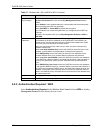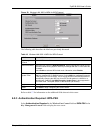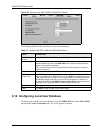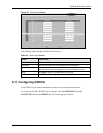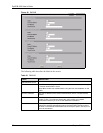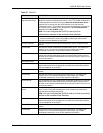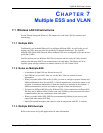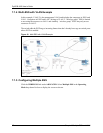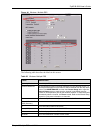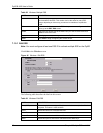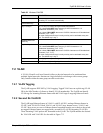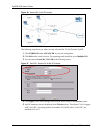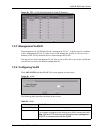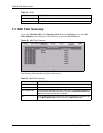
ZyAIR B-3000 User’s Guide
Chapter 7 Multiple ESS and VLAN 86
CHAPTER 7
Multiple ESS and VLAN
7.1 Wireless LAN Infrastructures
See the Wizard Setup and Wireless LAN chapters for some basic WLAN scenarios and
terminology.
7.1.1 Multiple ESS
Traditionally, you needed different APs to configure different ESSs. As well as the cost of
buying extra APs, there was also the possibility of channel interference. The ZyAIR’s
Multiple ESS (Multi-ESS) function allows multiple ESSs to be configured on just one access
point (the ZyAIR).
Wireless stations can use different ESS IDs to associate with the same AP. Only wireless
stations with the same ESS ID can communicate with each other. This allows the AP to
logically group wireless stations in a manner similar to VLAN (Virtual LAN).
7.1.2 Notes on Multiple-ESS
• A maximum of eight ESSs are allowed on one AP.
• Each ESS has its own MAC filter set; see the MAC filter set section for more
information.
• When you enable Multi-ESS on the ZyAIR, you need to configure separate Unicast and
Multicast/Broadcast keys for each ESS. A Unicast transmission is from one sender to one
recipient. A broadcast transmission is from one sender to everybody on the network. A
Multicast transmission is from one sender to a group of hosts on the network.
• You must use different WEP keys for different ESSs. If two stations have different ESS
IDs (they are in different ESSs), but have the same WEP keys, they may hear each other’s
communications (but not communicate with each other).
• When you enable Multi-ESS, ESS IDs are automatically hidden (so site survey tools
cannot find other station ESS IDs).
• Multi-ESS should not replace but rather be used in conjunction with 802.1x security.
7.1.3 Multiple ESS Example
Refer to the section on ZyAIR applications for more information.




